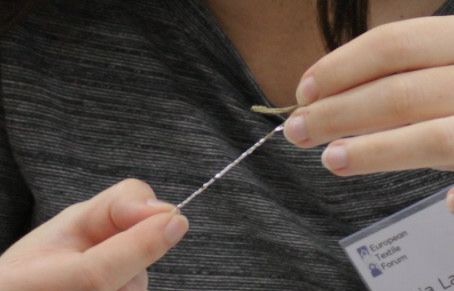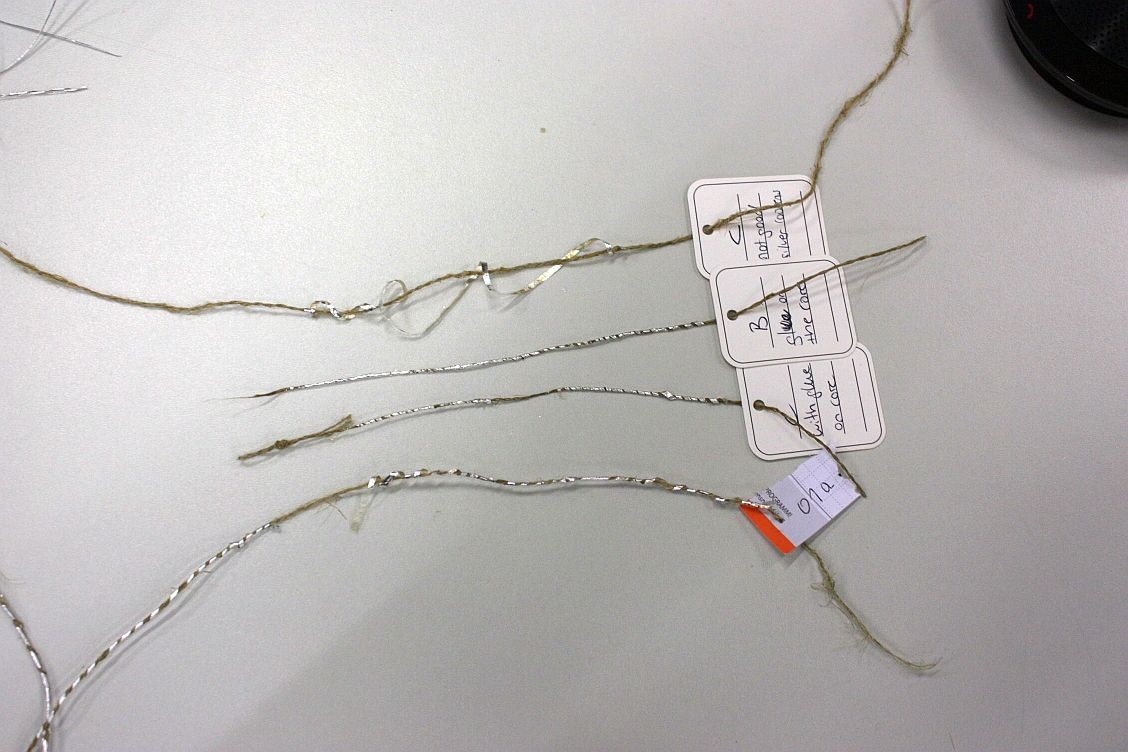Search the Blog
Latest Comments
Tales from Forum, Part II
Not all that glitters is gold - sometimes it's just gilt silver, hammered into leaf metal, attached to a thin animal membrane and then wrapped around a thread core.
You might know about medieval gold thread, which was usually a strip of metal (often gilt silver, very rarely pure gold) wrapped around a silk core. Well, that's the "good" version, high-quality and rather pricey. And as always, if there's something posh and fancy and expensive, someone tries to get the same effect but for cheaper.
Enter the membrane threads. These are usually not around a silk core, but around a thread made from vegetable fibres, and the metal strip is replaced by animal membranes or, in other places, by a thin leather strip or by a paper strip. These are metallised with leaf metal, and here again, you can make it cheaper by reducing the amount of gold. How? By using "Zwischgold" - silver hammered out, then covered with a thin layer of gold, and this then hammered into leaf metal.
Gold leaf is really, really thin, so thin that you cannot touch it with your hands. It will instantly cling to your skin and then dissolve. Medieval gold leaf was thicker than modern gold leaf, but it would still not be handle-able without gilding tools. Gold was expensive - so having the cheaper silver as the main metal and just adding a bit of gold would reduce costs considerably. New research about Zwischgold shows how it looked, and the thicknesses given are about 30 nm of gold in the Zwischgold as opposed to c 140 nm thickness of the regular gold leaf.
This superthin stuff needs something to cling to, so it is stable enough for further processing. In the cheap gold threads that we were aiming to reproduce, animal membranes were used - to be more precise, a layer of membrane from bovine guts.
So we had a go at silvering them - using not proper Zwischgold, but leaf silver, since that was a lot cheaper to get and is closer to the medieval original material. Then the membrane has to be cut into strips, and the strips then wound around a core, all of which proved to be do-able, but with a lot of room for improvement.
Both the gilding and the wrapping did require a lot of concentration! It also took us a while to puzzle out a method with which a longer piece of thread could be wrapped without getting too much of a twist buildup.
A final very important part of making these threads, as we also found out: Time. Once the metal is on the membrane, it needs sufficient time to dry out properly, or it will come right off the membrane and right onto everything else - fingers, faces, tables, you name it! With enough drying time, it is much more stable.
Just like with the purple dye imitation, a good bit of work remains to be done on this, but we're very, very pleased with our preliminary results.





